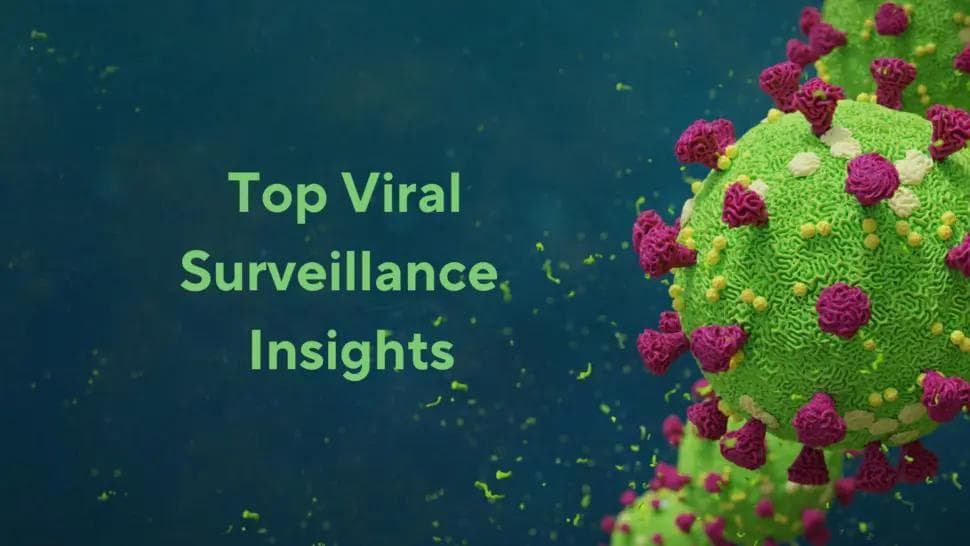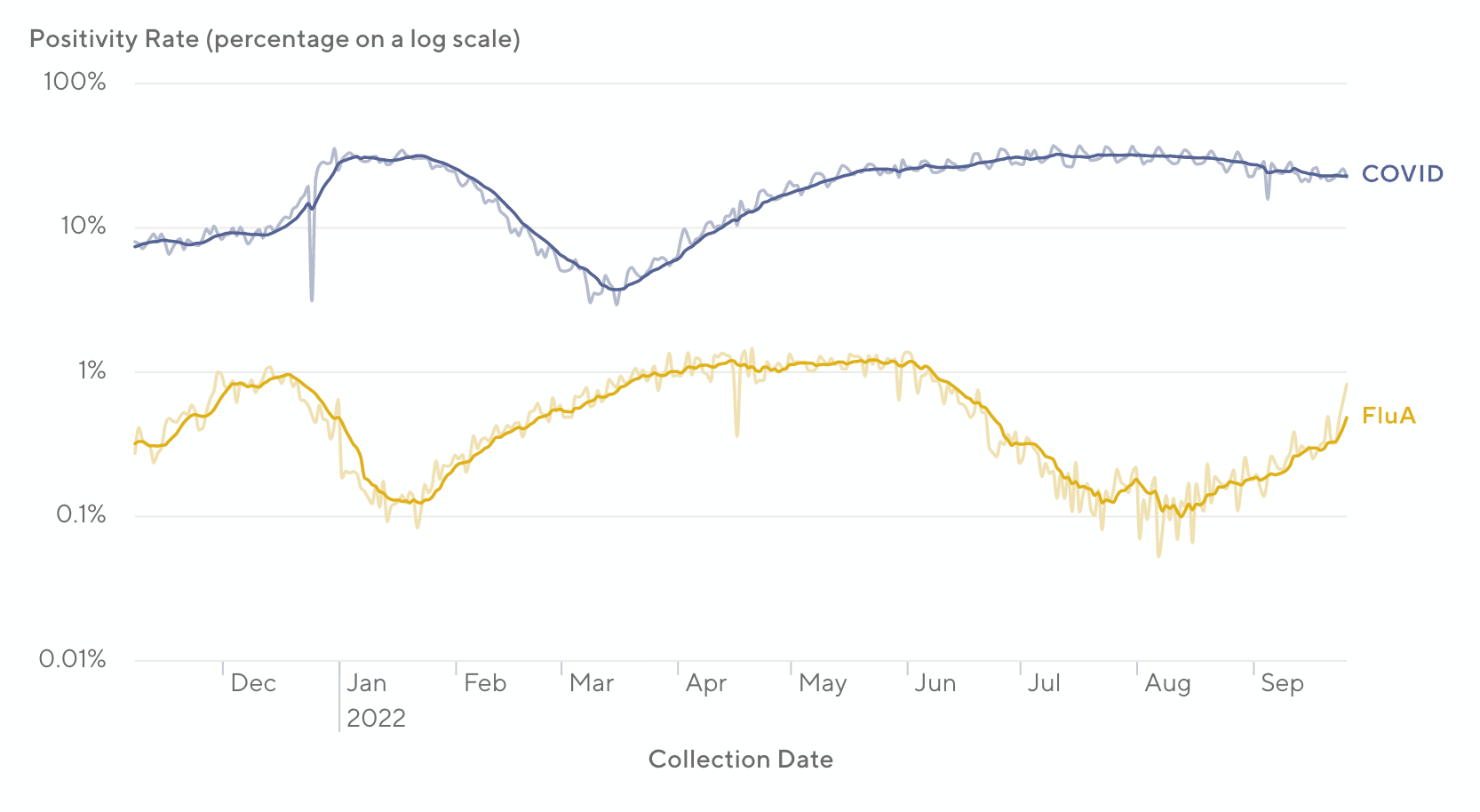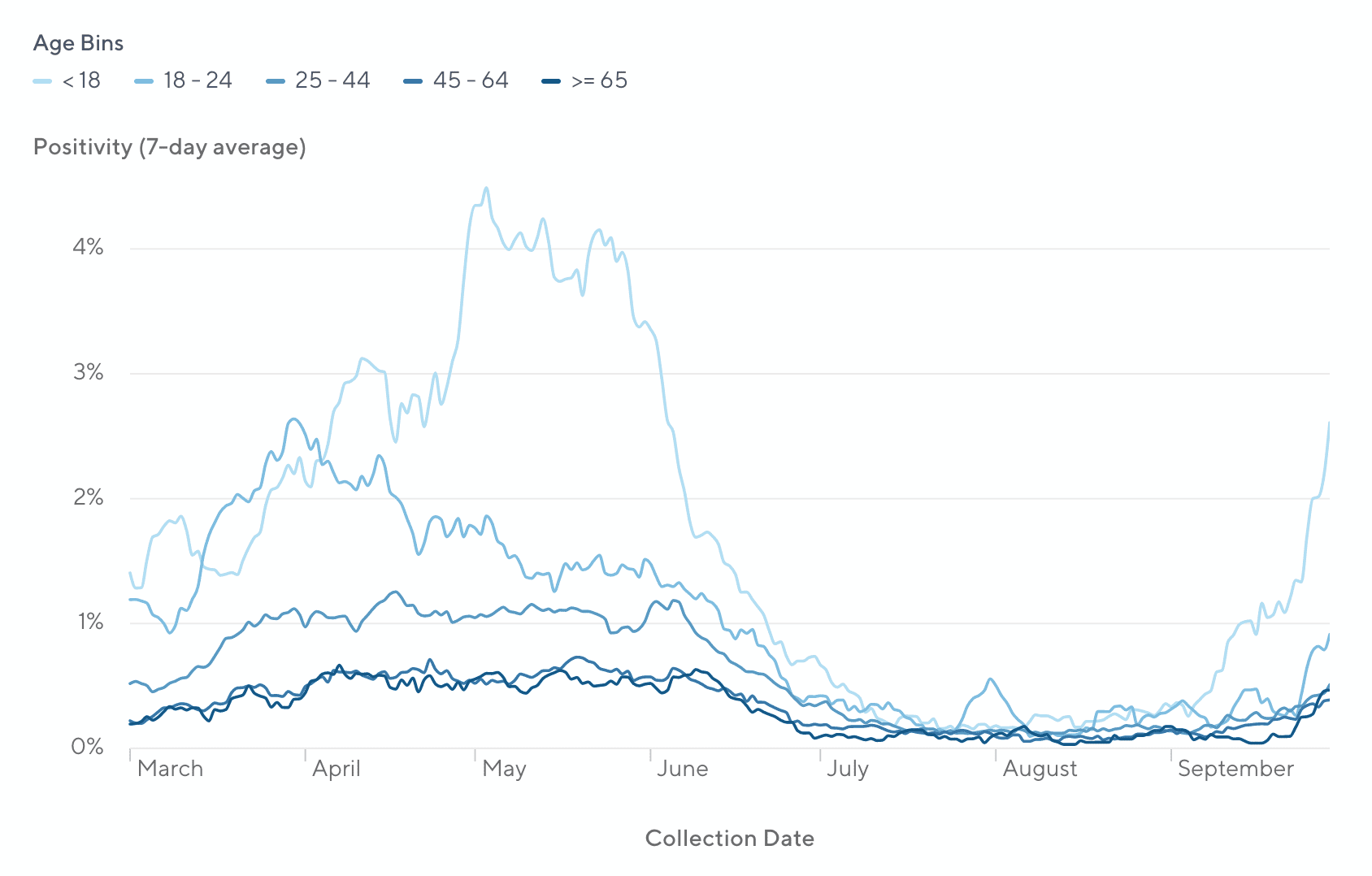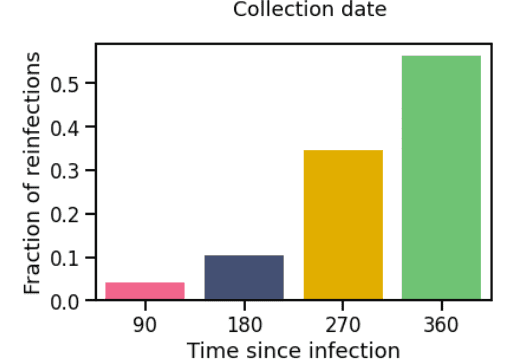Our Top Viral Surveillance Insights in Early October

As COVID becomes more a part of our everyday lives, we’ll post these viral surveillance insights only when there is enough relevant news to share. Below are our latest takeaways:
- Despite cases still going down, there likely will be a winter COVID wave: It is still too early to say to what extent a new variant will contribute to the winter wave, but growing reinfections and waning immunity make it highly likely that there will be a positive uptick in cases in coming months. Several European countries are already starting to see cases trend back up, and some of the northeastern states in the US have had a recent, sharp uptick in their wastewater results.
- Flu is also on the rise. Our flu data shows positivity rates have shot up substantially for school-age children, and we are seeing an uptick in other respiratory pathogens. This is likely attributable to kids being back in the classroom and general seasonality as the weather turns colder, and is consistent with flu trends from pre-pandemic years. The good news? This fall’s flu and COVID vaccines match the variants circulating so vaccines taken this fall should help mitigate this.
Figure I: Flu and COVID positivity rates

Figure 2: Flu positivity by age

- Variants we have our eyes on: BF.7, BQ.1 and BQ.1.1 are all subvariants of BA.5 with mutations at sites that are known for their strong ability to escape immunity. These subvariants are still showing up at fairly low rates within the US (<5%), but the fact that they are still making headway even when there is a lull in cases means they may warrant monitoring.
- Vaccine-induced immunity does not protect against reinfection after ~3 months: Recent paper from Kaiser Permanente shows original vaccine immunity still protects against hospitalization but wanes over time for reinfection (especially for BA.4 and BA.5 variants). This is corroborated with our recent reinfections analysis that shows most are occurring on people that contracted COVID about a year ago. This is the only study in the US that gives this level of detail and we were proud to support it with our sequencing efforts.
Figure 3: Percentage of reinfections where the original infection occurred 360 days ago

Categories